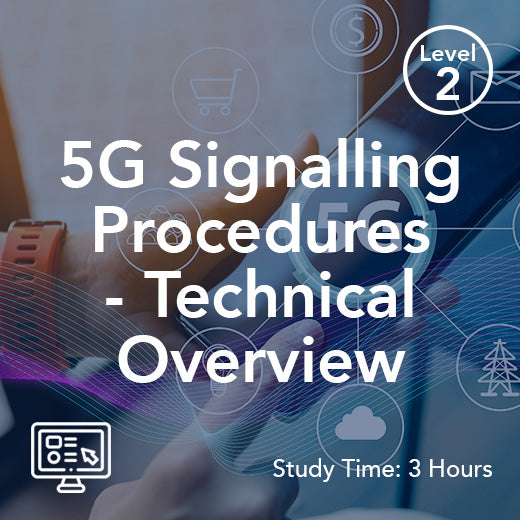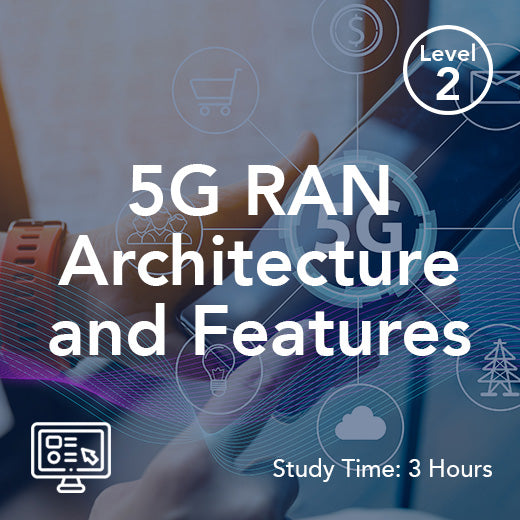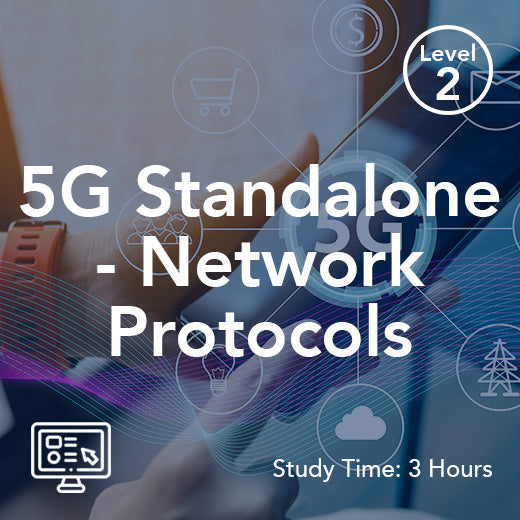Comprendere i controller di rete radio: una guida semplice per tutti
- , di Stephanie Burrell
- 9 tempo di lettura minimo
Nell’era degli smartphone e della connettività senza soluzione di continuità, il ruolo di un controller di rete radio all’interno della rete di accesso radio rappresenta una pietra angolare nel garantire che i nostri dispositivi rimangano collegati e operativi. Questo eroe sconosciuto delle reti mobili orchestra il flusso di dati, garantendo che chiamate, messaggi e connessioni Internet vengano consegnati senza intoppi. Che tu stia chiamando un amico dall'altra parte della città o trasmettendo in streaming la tua serie preferita, il controller della rete radio è silenziosamente al lavoro dietro le quinte. Comprendere come funzionano questi controller può demistificare il sofisticato mondo della tecnologia mobile, rendendolo accessibile a tutti. Unisciti a noi mentre approfondiamo il funzionamento essenziale di questo componente vitale, facendo luce sul suo ruolo fondamentale nella nostra vita digitale quotidiana.
Cos'è un controller di rete radio?
Un controller di rete radio (RNC) è un nodo cruciale nelle telecomunicazioni mobili. Gestisce le risorse radio e garantisce una comunicazione efficiente tra dispositivi mobili e stazioni base. Questa sezione ti introdurrà alle funzioni e al significato degli RNC nel mondo delle telecomunicazioni.
Spiegazione delle funzioni di base
I controllori di rete radio sono il cervello dietro le reti mobili. Coordinano le interazioni tra i dispositivi mobili e l'infrastruttura di rete. Il loro compito principale è supervisionare l' allocazione delle risorse e dei canali radio, garantendo che i segnali di comunicazione vengano trasmessi in modo efficace.
Gli RNC gestiscono anche i soft handover , che garantiscono una transizione graduale delle chiamate o delle sessioni dati quando gli utenti si spostano tra le torri cellulari. Questo processo è fondamentale per mantenere la qualità delle chiamate e una connettività senza interruzioni.
Inoltre, questi controller gestiscono il controllo dell'alimentazione, che bilancia la potenza del segnale per ridurre al minimo le interferenze e ottimizzare le prestazioni della rete. Questa funzione aiuta a mantenere una connessione chiara e stabile, anche in aree ad alta densità di utenti.
Importanza nelle telecomunicazioni
Nelle telecomunicazioni, il ruolo delle RNC non può essere sopravvalutato. Sono fondamentali per mantenere la stabilità della rete e garantire una qualità del servizio ottimale. Gli RNC aiutano a gestire la congestione della rete distribuendo efficacemente le risorse radio tra gli utenti.
Inoltre, svolgono un ruolo fondamentale nell’espansione della copertura e della capacità della rete. Gestendo in modo efficiente più connessioni nel nodo bs contemporaneamente, gli RNC garantiscono che gli operatori possano servire più utenti senza compromettere la qualità del servizio.
L’importanza delle RNC è ulteriormente evidenziata dalla loro capacità di adattarsi alle mutevoli richieste della rete. Man mano che le esigenze degli utenti evolvono, questi controller garantiscono che l'infrastruttura di rete rimanga solida e affidabile, migliorando in definitiva l'esperienza dell'utente.
Componenti chiave dei controller di rete radio
I controller di rete radio sono composti da diversi componenti chiave che lavorano insieme per gestire le operazioni di rete. Questa sezione esplorerà gli elementi hardware e software della rete centrale, nonché il ruolo dei controllori delle stazioni base nell'ecosistema RNC.
Elementi hardware e software
Gli elementi hardware degli RNC includono processori , unità di memoria e interfacce che consentono lo scambio di dati con le stazioni base. Questi componenti bs sono progettati per gestire grandi volumi di dati e garantire una rapida elaborazione delle informazioni.
Dal punto di vista software, gli RNC si basano su algoritmi e protocolli sofisticati. Questi programmi gestiscono attività come l'allocazione delle risorse e la correzione degli errori. Il software garantisce un'efficiente trasmissione dei dati nell'rnc di controllo e gestisce processi complessi come passaggi di consegne e bilanciamento del carico.
L'integrazione di hardware e software è fondamentale per il corretto funzionamento degli RNC. Questa collaborazione di monitoraggio garantisce che i controller possano adattarsi alle richieste della rete e mantenere prestazioni elevate anche in condizioni difficili.
Ruolo dei controllori della stazione base
I controllori della stazione base (BSC) sono parte integrante del funzionamento degli RNC. Gestiscono le risorse radio di più stazioni base, elemento di governo all'interno di un'area geografica. I BSC si coordinano con gli RNC per supportare una gestione efficiente del traffico di rete.
I BSC supervisionano funzioni come gli handover, garantendo che gli utenti mobili usufruiscano di un servizio ininterrotto quando si spostano tra le celle. Gestiscono inoltre l'allocazione della frequenza e il controllo della potenza di crittografia, ottimizzando le prestazioni della rete.
Inoltre i BSC fungono da collegamento tra il centro di commutazione mobile e le stazioni base. Ad esempio, questa connessione è vitale per instradare chiamate e dati in modo efficace, mantenendo un flusso di comunicazione regolare attraverso la rete.
Come funzionano i controller di rete radio
Comprendere come funzionano i controller di rete radio implica esplorare i loro processi per l'elaborazione del segnale e il controllo del traffico di rete. Questa sezione approfondisce questi meccanismi, evidenziando il loro ruolo nel mantenere efficienti le operazioni di rete e garantire la sicurezza.
Elaborazione e gestione del segnale
L'elaborazione del segnale è una funzione fondamentale dei controllori di rete radio. Gli RNC gestiscono la codifica e la decodifica dei segnali di dati, anche per lo streaming mobile garantendo una trasmissione accurata tra i dispositivi mobili e la rete.
Codifica del segnale : gli RNC convertono i dati in un formato adatto alla trasmissione radio. Questo passaggio prevede l'applicazione di tecniche di correzione degli errori per ridurre al minimo la perdita di dati.
Trasmissione : i segnali codificati vengono trasmessi tramite onde radio al destinatario previsto. Gli RNC garantiscono che i segnali vengano inviati sulla frequenza ottimale per ridurre le interferenze.
Decodifica del segnale : una volta raggiunta la destinazione, i segnali vengono decodificati nella loro forma originale per essere consumati dall'utente.
Attraverso un'elaborazione precisa del segnale, gli RNC mantengono la qualità della comunicazione connessa e consentono servizi di rete mobile affidabili.
Controllo del traffico di rete
Il controllo del traffico di rete è un'altra funzione fondamentale degli RNC. Questi controller gestiscono il flusso di dati attraverso la rete, prevenendo la congestione e garantendo una comunicazione fluida.
Gli RNC danno priorità al traffico in base al tipo di dati trasmessi. Ad esempio, le chiamate vocali possono avere la priorità rispetto ai download di dati per mantenere la qualità delle chiamate. Questa definizione delle priorità aiuta a prevenire ritardi e garantisce la consegna tempestiva dei messaggi.
Inoltre, gli RNC monitorano i modelli di utilizzo della rete per identificare potenziali colli di bottiglia. Regolando dinamicamente l'allocazione delle risorse, mantengono un flusso di traffico efficiente, migliorando le prestazioni complessive della rete e la soddisfazione degli utenti.
Vantaggi dell'utilizzo dei controller di rete radio
I controller di rete radio offrono numerosi vantaggi che migliorano l'efficienza della rete e l'esperienza dell'utente. In questa sezione esploreremo questi vantaggi e il loro impatto sulla comunicazione mobile.
Miglioramento dell'efficienza della rete
Gli RNC svolgono un ruolo fondamentale nell'ottimizzazione dell'efficienza della rete. Gestendo le risorse radio, garantiscono che la larghezza di banda disponibile venga utilizzata in modo efficace, evitando sprechi.
Questi controller consentono inoltre alla rete di gestire più connessioni contemporaneamente. Questa capacità è fondamentale nelle aree densamente popolate dove la domanda degli utenti è elevata. Distribuendo in modo efficiente le risorse, gli RNC aiutano a mantenere la qualità del servizio anche durante i periodi di picco di utilizzo.
Inoltre, gli RNC supportano la scalabilità della rete, consentendo agli operatori di espandere la propria copertura e capacità con un investimento minimo. Questa scalabilità è essenziale per soddisfare la crescente domanda di servizi mobili.
Migliorare l'esperienza dell'utente
L'impatto degli RNC sull'esperienza dell'utente è significativo. Garantendo una connettività senza interruzioni e un servizio di alta qualità, questi controller migliorano la soddisfazione complessiva degli utenti mobili.
Gli RNC aiutano a mantenere la chiarezza delle chiamate e a ridurre le chiamate perse, che sono fondamentali per la fiducia degli utenti nei servizi mobili. Garantiscono inoltre un'elevata velocità dei dati, consentendo agli utenti di accedere ai contenuti online senza ritardi.
Inoltre, gli RNC supportano funzionalità avanzate come lo streaming mobile e i giochi in tempo reale. Gestendo le risorse di rete in modo efficace, consentono agli utenti di usufruire di questi servizi senza interruzioni, migliorando l'esperienza digitale.
Il futuro dei controllori di rete radio
Il futuro dei controller di rete radio è promettente, con progressi tecnologici e nuove soluzioni di rete all’orizzonte. Questa sezione esplorerà i potenziali sviluppi e il loro impatto sul settore delle telecomunicazioni.
Progressi tecnologici
I progressi tecnologici sono destinati a trasformare le capacità delle RNC. Un’area di sviluppo è l’integrazione dell’intelligenza artificiale (AI) nella gestione della rete. L’intelligenza artificiale può migliorare il processo decisionale, consentendo alle RNC di prevedere e rispondere alle richieste della rete in modo più efficiente.
Un altro progresso promettente è l’adozione della tecnologia 5G. Le RNC svolgeranno un ruolo cruciale nella gestione della complessa infrastruttura richiesta per le reti 5G. Dovranno supportare velocità di trasmissione dati più elevate e una latenza inferiore, migliorando l’erogazione del servizio.
Inoltre, si prevede che il networking definito dal software (SDN) rivoluzionerà l’architettura RNC. SDN consente maggiore flessibilità e controllo, consentendo agli operatori di adattare dinamicamente le risorse di rete per soddisfare le esigenze degli utenti.
Impatto sulle future soluzioni di rete
L’evoluzione degli RNC avrà un profondo impatto sulle future soluzioni di rete. Con funzionalità migliorate, questi controller consentiranno reti mobili più efficienti e affidabili, supportando una gamma più ampia di servizi e applicazioni.
Una migliore efficienza della rete porterà a risparmi sui costi per gli operatori, poiché potranno ottimizzare l’allocazione delle risorse e ridurre gli investimenti infrastrutturali.
Una migliore esperienza utente favorirà una maggiore adozione dei servizi mobili, ampliando le opportunità di mercato per i fornitori di telecomunicazioni.
L’integrazione di nuove tecnologie come l’intelligenza artificiale e il 5G creerà soluzioni innovative, trasformando il modo in cui le persone si connettono e comunicano.
Man mano che gli RNC continuano ad evolversi, rimarranno una pietra angolare dell’infrastruttura di rete mobile, guidando i progressi nelle telecomunicazioni e plasmando il futuro della connettività.
UN

































